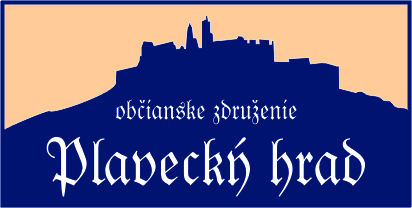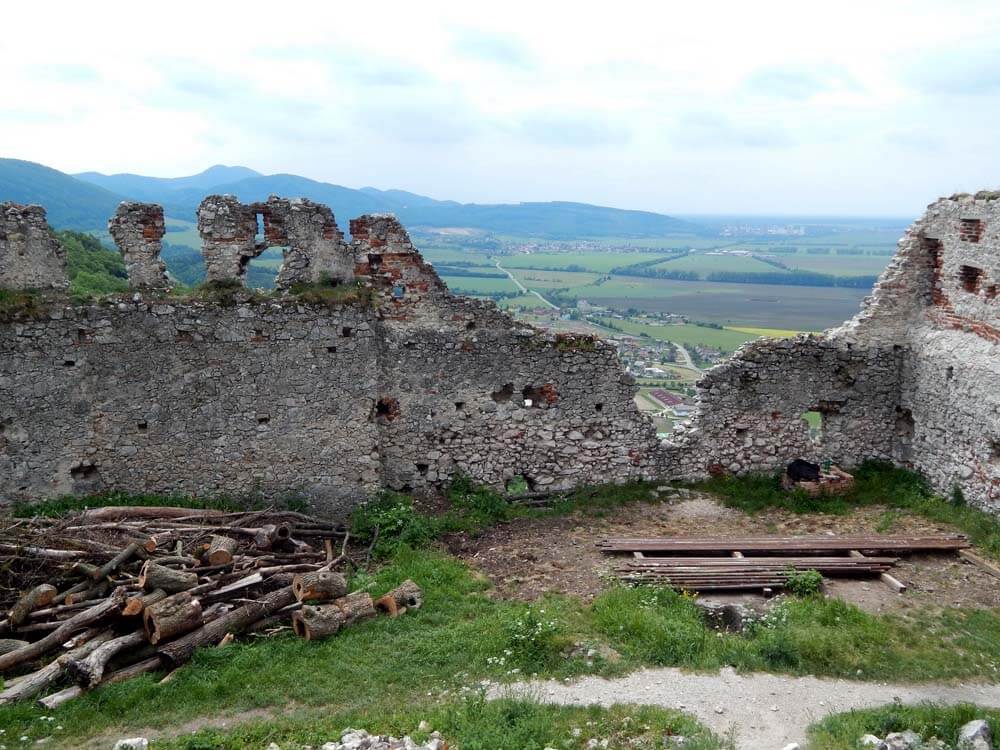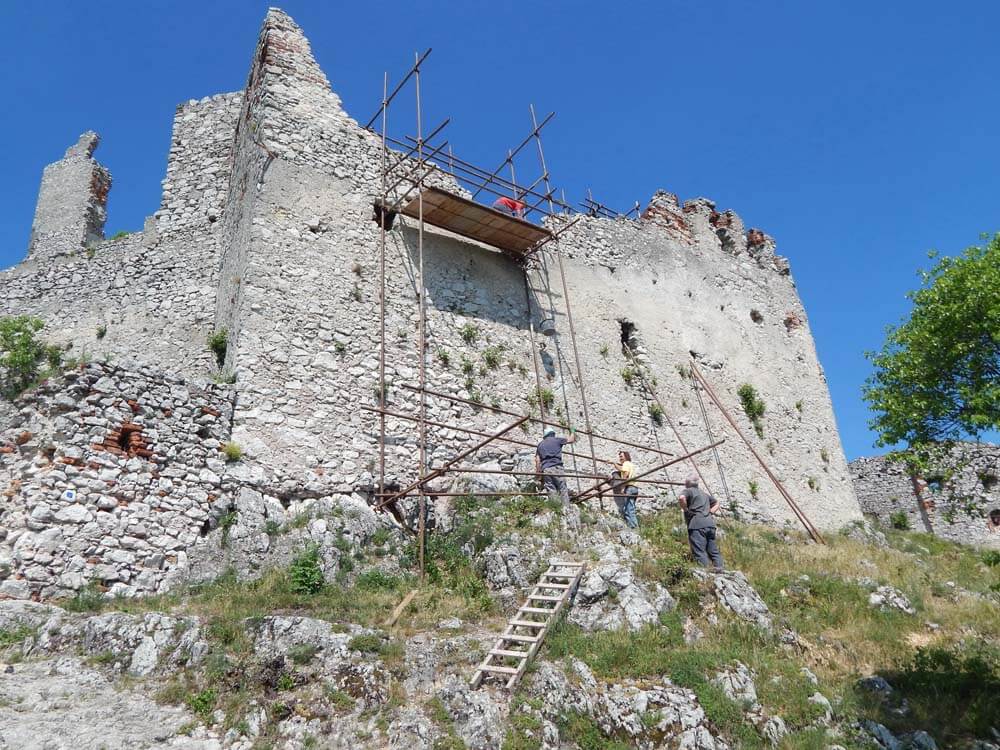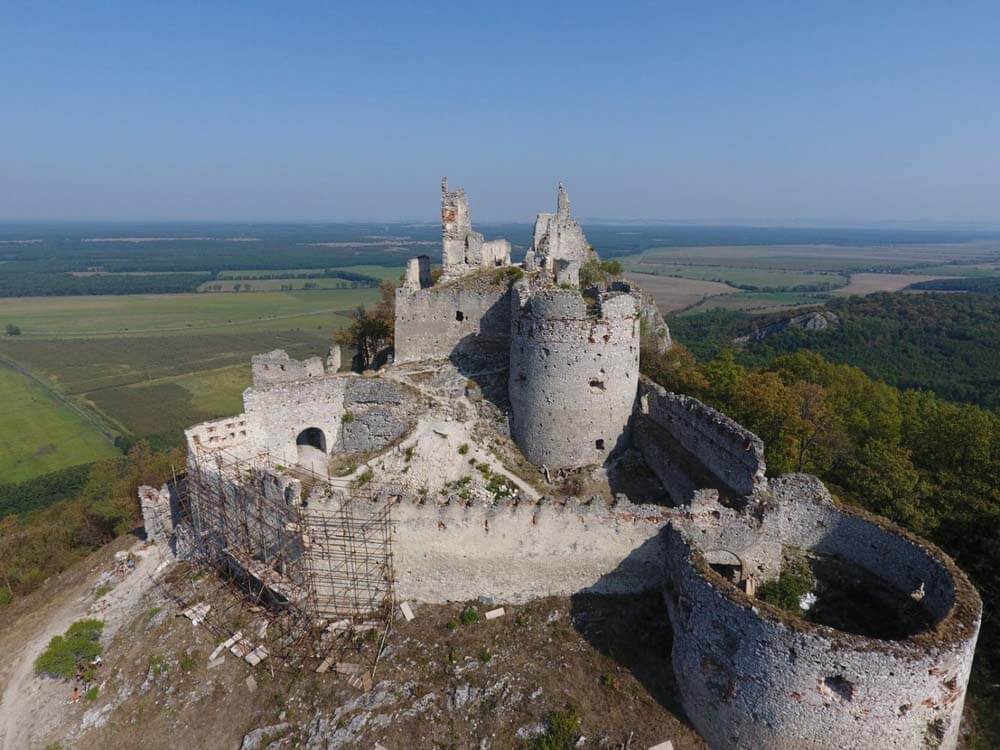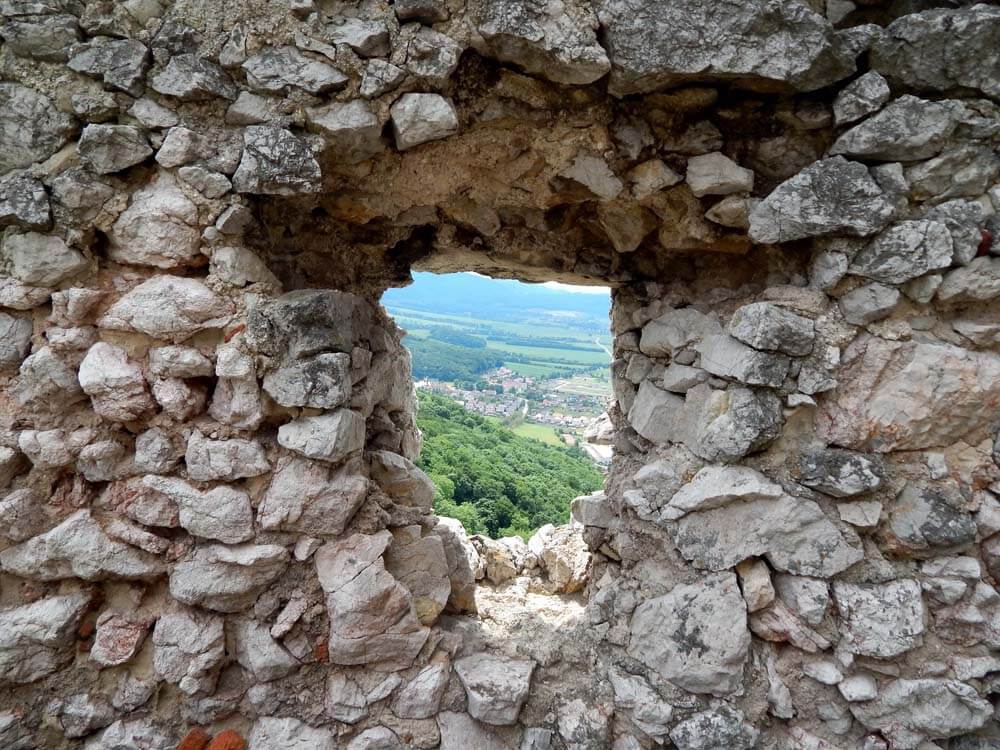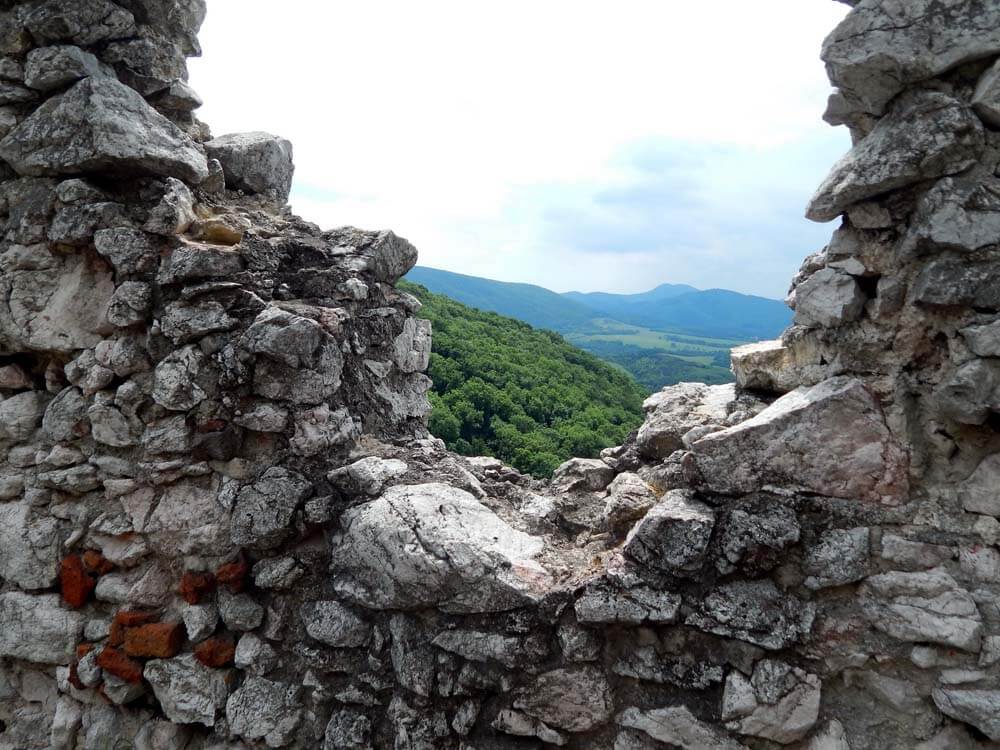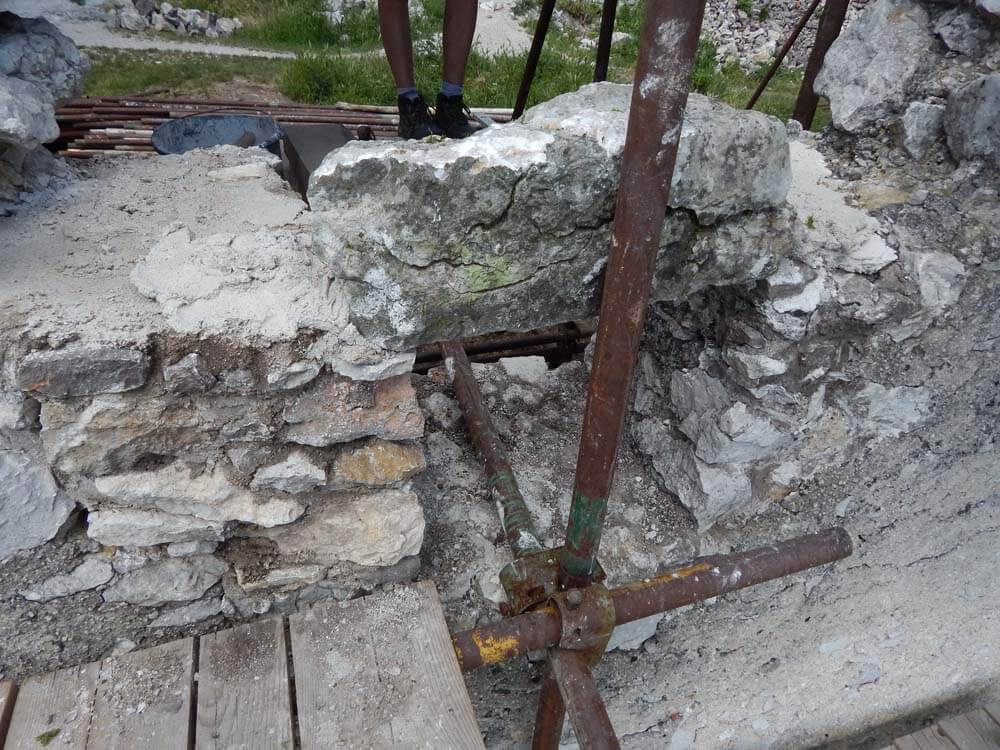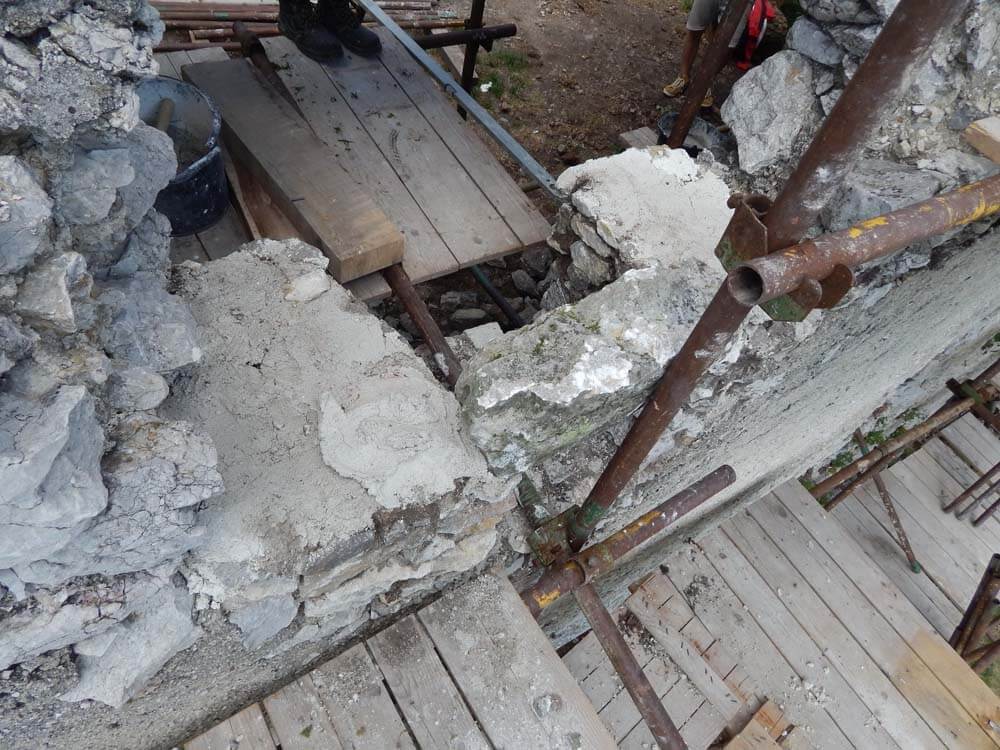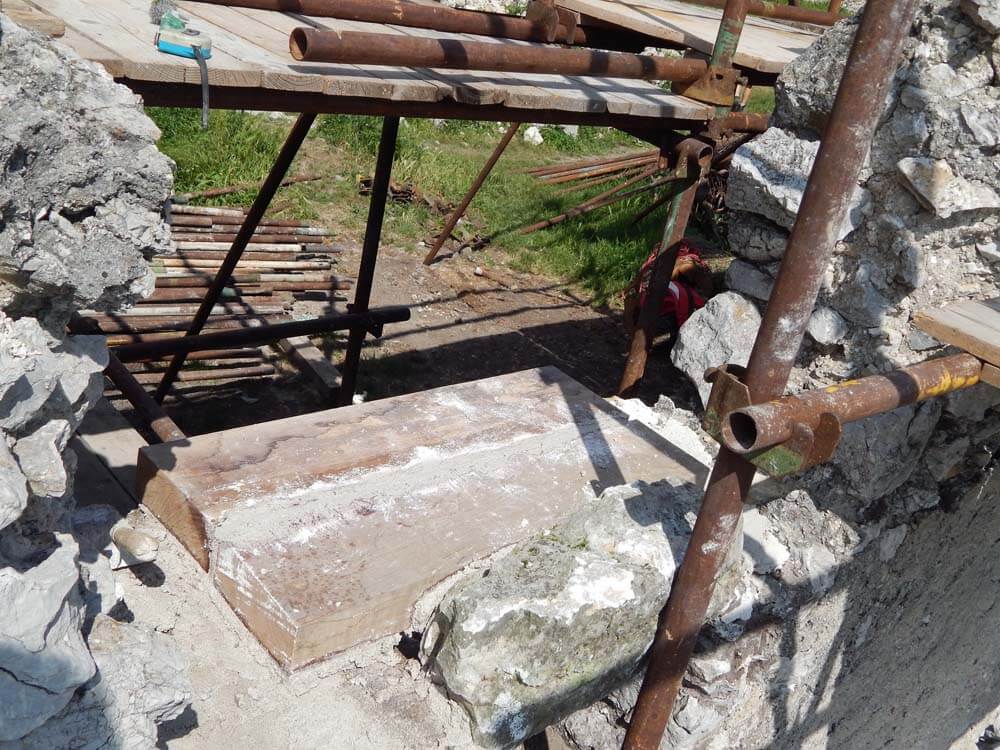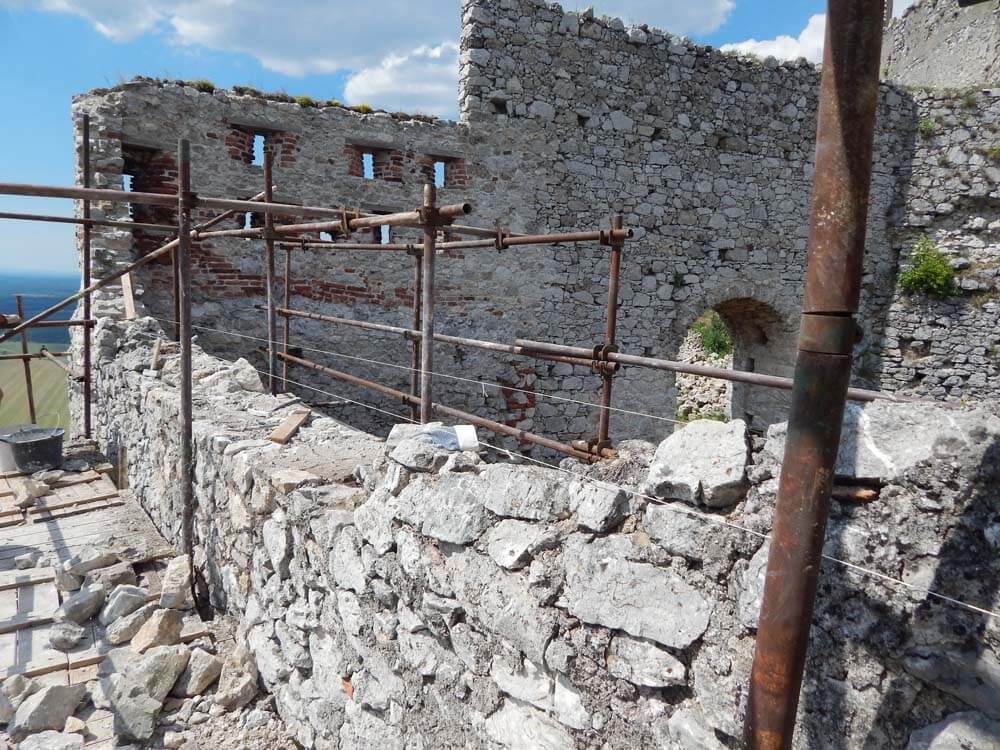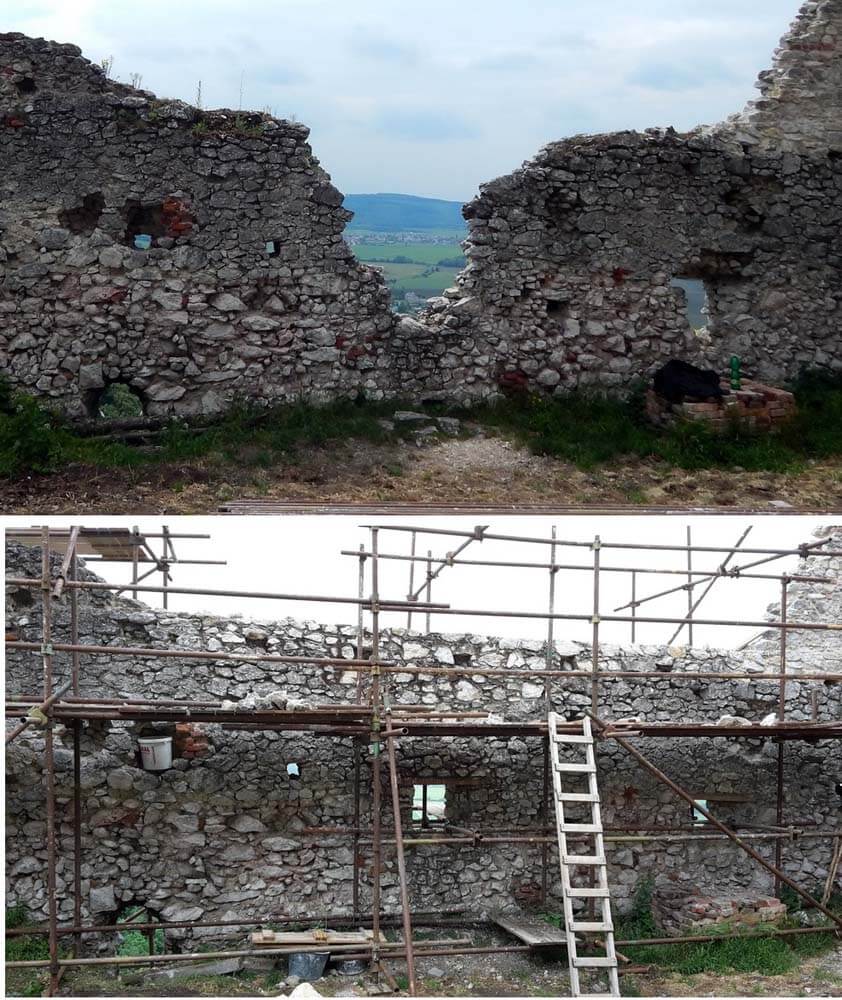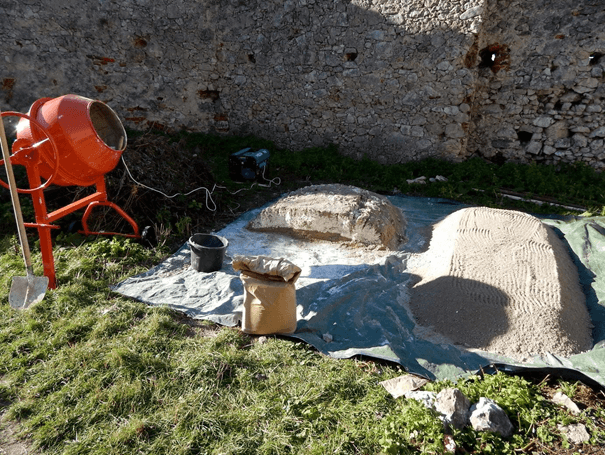Static reinforcement of restoration of the Plavecký Castle project, 1st stage
2013 was a ground-breaking year for Plavecký Castle, particularly because after more than 300 years, the caste objects have been restored and statically reinforced and the brickwork has started to increase rather than decrease. In the past years, static and architectonic-historic research of the selected objects has been performed.
Thanks to the support of the Ministry of Interior of the SR via the grant program “Restore your House”, a successful architectonic-historic research of the Western renaissance palace continued as well as reinforcement works at the object of Renaissance ravelin.
SW wall of the 1st ravelin
This segment concerns late gothic wall with crenellation dated to late 15th century, including simple cleft embrasures, which was rebuilt in 17th centure for about 1,7 m, involving breast wall with butterfly embrasures with wooden capping. Today, east and west sections of the fortification are well-preserved. West section of the breast wall was restored in 2014. From the point of view of the overall stability or imminent threat of collapse, the most dangerous part was the torso of the SW wall of the fortification with the break over the access road to the castle. Therefore, in 2017, the brickwork of 3,5 m3 has been added to the wall and two embrasures have been restored in its lower part, which stabilised the entire SW wall and prevented its destruction. This phase concerned a problematic object of the castle, which was successfully restored and stabilised to save for next generations. In 2017, it was necessary to build scaffolding in difficult steep terrain from the exterior up to 12 m of height and 6 m from the interior part to stabilise the tower. Subsequently, scuntions of the embrasures were restored first, followed by oak capping and brickwork of the wall and breast wall. This was a logistically complex process, for which all material for the static works needed to be manually transported for about 50m, which represented approximately 15 tons of material in total. There has been dozens of Belgian scouts helping to restore the castle during summer holidays, who performed support works, such as cleaning of the castle from weed, relocation of stones, water and sand, as well as helping during archaeological research of the Northern gothic palace and pillars of the renaissance bridge leading to the upper castle.
West Renaissance palace
SW wall of the Reneissance ravelin
The entire work at the given objects was done by quality manual work, while using original materials (stone collected from the surface of the castle) and technologies (preparation of middle age hot lime mortar with usage of pozzolan additives – Metakaolin). The works took place from June through October, whereas this time period gave us enough time for the carbonisation of mortar before freezing weather.
